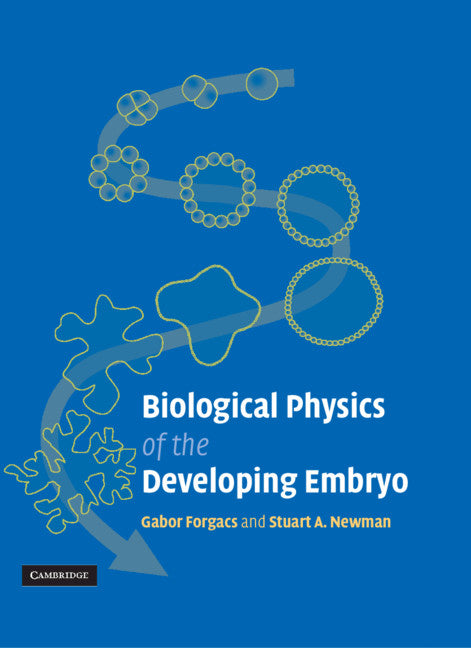Freshly Printed - allow 8 days lead
Couldn't load pickup availability
Biological Physics of the Developing Embryo
Advanced textbook that uses physics to analyze stages and components of the biological development process.
Gabor Forgacs (Author), Stuart A. Newman (Author)
9780521783378, Cambridge University Press
Hardback, published 24 November 2005
346 pages, 110 colour illus.
25.2 x 19.5 x 2.2 cm, 0.928 kg
'… one way to describe [the book] is to say that it is an extension of D'Arcy Thompson's great work … I should not omit to mention the illustrations, which are artistic. Students with a background in physics, chemistry or mathematics, and an interest in biological problems, will benefit greatly from this book … Forgacs and Newman have assimilated much from a vast and diverse literature. They manage to convey a great deal of information, interesting in itself … my guess is that most developmental biologists will be familiar with only a tiny part of it.' Current Science
During development cells and tissues undergo changes in pattern and form that employ a wider range of physical mechanisms than at any other time in an organism's life. This book shows how physics can be used to analyze these biological phenomena. Written to be accessible to both biologists and physicists, major stages and components of the biological development process are introduced and then analyzed from the viewpoint of physics. The presentation of physical models requires no mathematics beyond basic calculus. Physical concepts introduced include diffusion, viscosity and elasticity, adhesion, dynamical systems, electrical potential, percolation, fractals, reaction-diffusion systems, and cellular automata. With full-color figures throughout, this comprehensive textbook teaches biophysics by application to developmental biology and is suitable for graduate and upper-undergraduate courses in physics and biology.
Introduction
1. The cell: fundamental unit of developmental systems
2. Cleavage and blastula formation
3. Cell states: stability, oscillation, differentiation
4. Cell adhesion, compartmentalization and lumen formation
5. Epithelial morphogenesis: gastrulation and neurulation
6. Mesenchymal morphogenesis
7. Pattern formation: segmentation, axes and asymmetry
8. Organogenesis
9. Fertilization: generating one living dynamical system from two
10. Evolution of developmental mechanisms
Glossary
References
Index.
Subject Areas: Developmental biology [PSC], Biochemistry [PSB], Biophysics [PHVN], Reproductive medicine [MFKC]


